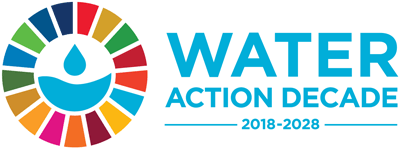Improving water resources management
China has strengthened management and supervision systems, and water quality across the country has been further improved. The Plan for Water Resource Protection has been introduced, which puts in place a water resource management system that combines tiered management at central and local levels and management based on river valley and administrative division. The Measures for Supervision of Functional Water Zones has been circulated, which sets clear requirements for tiered and categorized supervision over water function zones and puts rigorous limits on the total amount of sewage discharge.
The assessment on water function zones of major rivers and lakes against national standards has been completed and the monitoring coverage for major water function zones has reached 95%. Efforts have been made to tighten supervision over sewage discharge outlets, enhance protection and management of drinking water sources, strengthen ground water pollution prevention and put in place an evaluation mechanism for coastal water quality. Among the monitored drinking water sources in cities at and above prefecture-level, 93.6% of surface water sources and 85% of ground water sources have met the standards. The water quality in the first phase of the east and middle lines of South-North Water Transfer Project has maintained up to standard.
Building a ‘water-saving society’
China has comprehensively promoted the building of a water-saving society in an all-round way and water efficiency has substantially increased. The Action Plan for Dual Control of Total Volume and Intensity of Water Resource Consumption in the 13th Five-Year Plan Period, the Action Plan for Water-conservation among the Whole Population, the 13th Five Year Plan for Water-saving Society, the Guidelines for Urban Water Conservation and other documents have been issued, which put forth a host of indicators for water consumption volume control, lay out specific actions to conserve water in agricultural and industrial production as well as in cities, and put forward the goals and tasks for building a water-saving society. Altogether 29 national standards for water consumption quota have been issued, covering 31 provinces, municipalities and autonomous regions.
Mechanisms for whole-process involvement of water users have been promoted and technology, processes and models suited to citizens’ needs and local conditions have been employed. In 2016, water consumption per 10,000 RMB yuan of GDP dropped by 5.6%.
China has undertaken comprehensive management and treatment and water-related ecosystems have been further restored. China has intensified comprehensive ground water management against overuse and designated and published prohibited and restricted areas for ground water mining in 20 provinces, municipalities and autonomous regions. Intensified efforts have been made to build ground water monitoring sites to improve the monitoring network. While developing pilot cities for water eco-systems, projects have been carried out to connect river and lake systems.
Soil and water conservation
Besides, China has also worked to implement plans for soil and water conservation, uphold the ecological red line, provide more support for poor regions and promote monitoring and IT application in soil and water conservation. In 2016, China completed comprehensive treatment to 54,400 km2 of areas affected by soil erosion, revamped 4 million mu of slope farmland, built over 300 eco-clean small watersheds and carried out preventive protection to 16,000 km2 of land. 29,157 production and construction projects have reported soil and water conservation plans as required by law, covering 11,592 km2 of land, effectively curbing soil erosion caused by human activities. In addition, China has made mid-to long-term plans to further expand the scope of returning farmlands to forests and promote afforestation. In 2016, commercial logging of natural forests were fully stopped nationwide and the management and protection area of natural forest protection projects reached 1.732 billion mu.
South-South cooperation
China has conducted South-South cooperation on water and sanitation to strengthen other developing countries’ capability for sustainable management. Through foreign aid projects, technical assistance, provision of supplies, training programs for officials and technicians, China has helped other developing countries achieve water and sanitation goals, involving such areas as use and management of water resources, soil and water conservation, low-carbon demonstration, desalination, desertification and environmental monitoring.
Under the framework of China South-South Cooperation Green Envoys Program and China-ASEAN Green Envoys Program, China has provided environmental management and technology training including on water and sanitation management by using foreign assistance, special fund for Asian regional cooperation and other funding. China has also actively promoted Lancang-Mekong River Basin cooperation on water resources, including by hosting a seminar on water quality monitoring capacity building for Lancang-Mekong Basin countries. The largest water conservation project in Sri Lanka – the Moragahakanda Reservoir Project funded by China – has completed phased construction and will provide clean drinking water for millions of people beside irrigation.
Next steps
With the deepening of industrialization and urbanization and growing impact of climate change, such problems as floods, droughts, water shortage and pollution as well as soil erosion will become more salient. China still faces serious challenges in sustainable management and use of water resources.
By 2020, China will strive to its increase rural centralized water supply rate to over 85%, rural tap water coverage rate to over 80%, and the coefficient of nationwide effective use of irrigation water to over 0.55. China will have reduced the water consumption per 10,000 RMB yuan of GDP and per 10,000 RMB yuan of industrial added value by 23% and 20% respectively. Another 270,000 km2 of land affected by soil erosion will have been comprehensively treated, 1.067 million hectares of slope farmland revamped and 64,000 km2 of land put under preventive protection. In order to achieve these targets, China will speed up transformation from traditional to modern and sustainable water conservancy, set more store by conservation and protection of water resources, put equal emphasis on construction and management, and pay more attention to institutional innovation.

